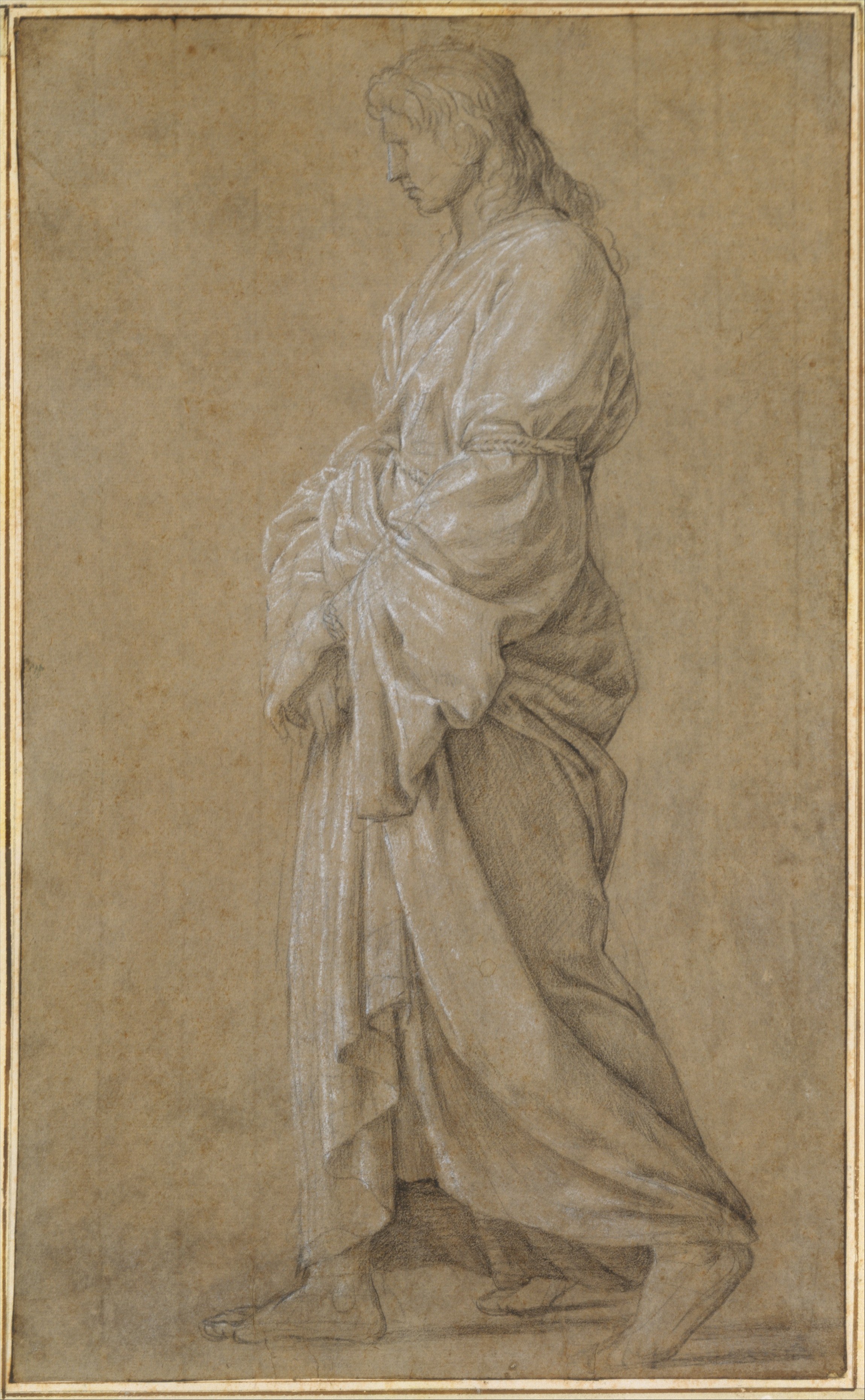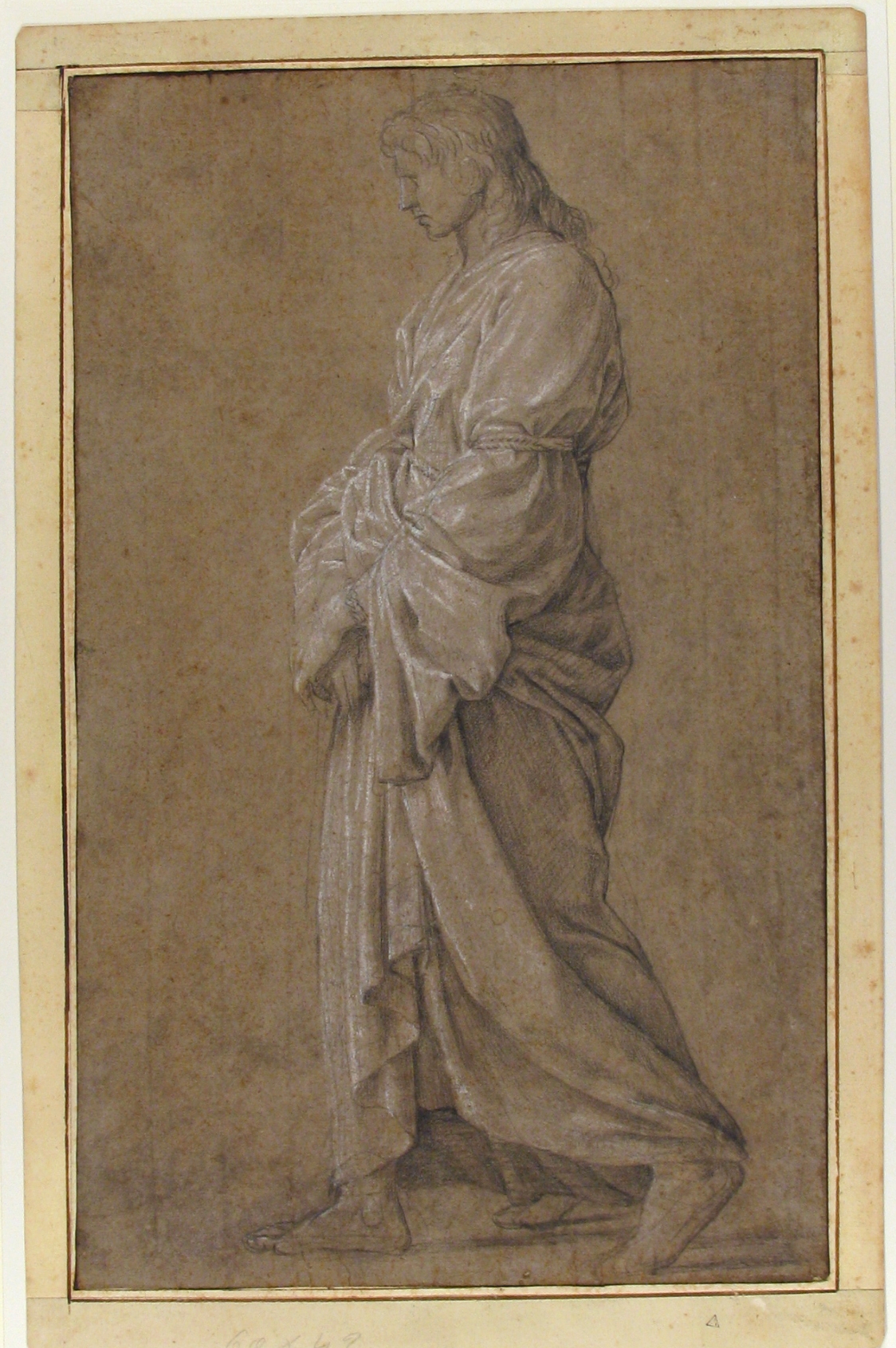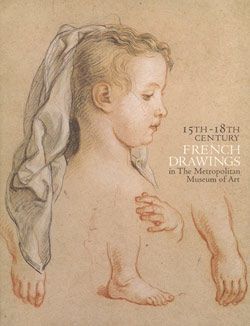Study for Saint Gervasius
Eustache Le Sueur French
Not on view
One of the founders of French classicism, Le Sueur’s contemporaries considered him on par with Nicolas Poussin and Charles Le Brun. He did not make the traditional trip to Italy, but was trained in the busy studio of Simon Vouet, whose pleasing decorative style he assimilated. He went on, in his independent work, to absorb the lessons of Raphael and Poussin, moving towards a greater simplicity and monumentality. The Metropolitan’s drawing dates to Le Sueur’s late years when he sought to unite severity and refinement in his work.
This draped study prepares the central figure of Saint Gervasius in Saint Gervasius and Saint Protasius Led before Astasius (Musée du Louvre, Paris), the first cartoon from a projected series of six commissioned from Le Sueur in 1652 by the church wardens of Saint-Gervais-Saint-Protais, Paris. Le Sueur’s early death prevented him from completing the project. A second cartoon, depicting the Flagellation of Saint Gervasius (Musée des Beaux-Arts, Lyon), was finished after his death by his brother-in-law Thomas Goussé, and the remaining four were assigned first to Sebastien Bourdon and then to Philippe de Champaigne.
Following the practice he had learned in Vouet’s studio, Le Sueur carefully prepared this first painting by making nine figure studies, including one for each saint. The study for Saint Protais was formerly in the collection of Georges Pébereau, Paris, Died in 2012, some of his collection went to the Louvre. Although one likely existed, no compositional study has yet come to light. The story of the martyrdom of the Lombard twin brothers Saint Gervasius and Saint Protasius for refusing to sacrifice to idols has its source in Jacques de Voragine’s Golden Legend. In the painting, the two saints, brought before Astasius, are swathed in drapery of a milky whiteness that contrasts with the saturated hues of the surrounding soldiers. Saint Gervasius is shown being led forward by his captors, hands and arms bound and eyes cast downward to further emphasize his tranquil lack of resistance.
In the Metropolitan’s sheet, Le Sueur paid very little attention to the features of Gervasius’s face. As is typical for studies of this type, the focus is on the drapery—majestic and light, and brilliantly rendered with delicate white chalk highlights and careful shading in black chalk to model the folds.
Due to rights restrictions, this image cannot be enlarged, viewed at full screen, or downloaded.
This artwork is meant to be viewed from right to left. Scroll left to view more.








